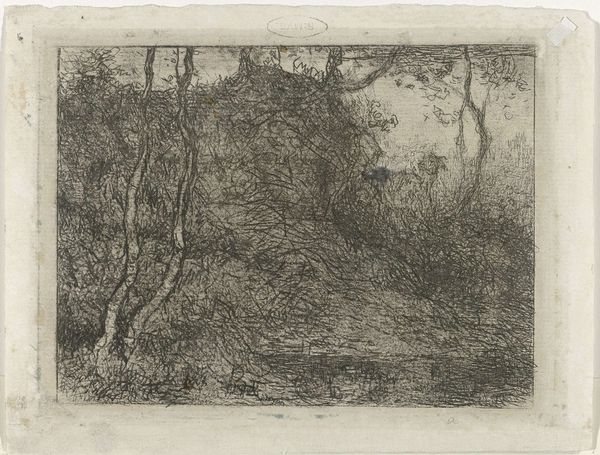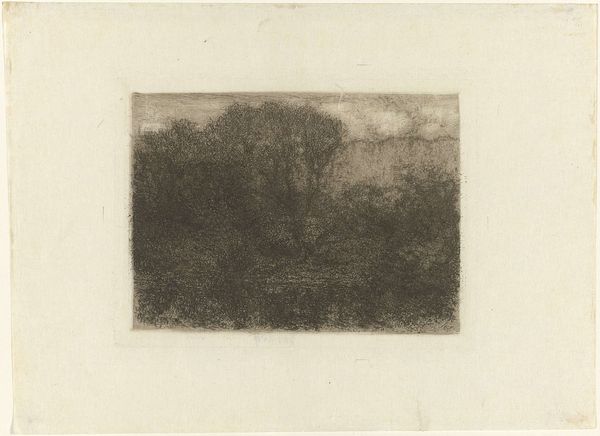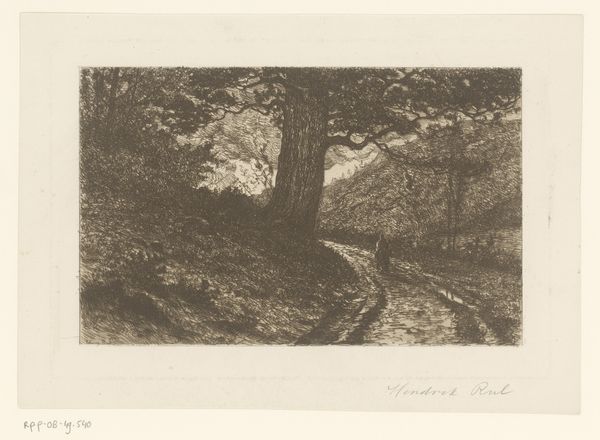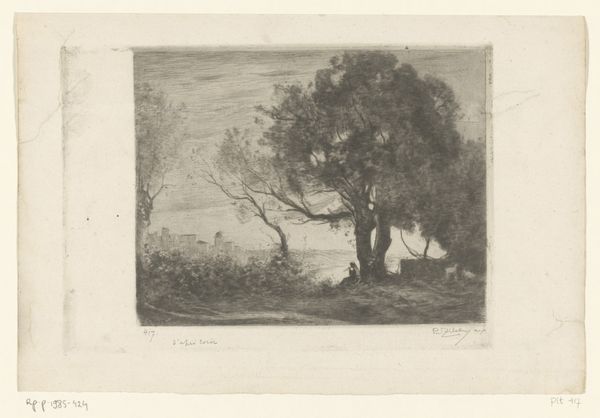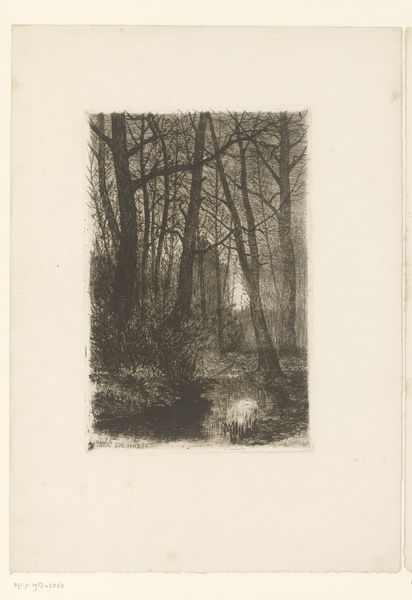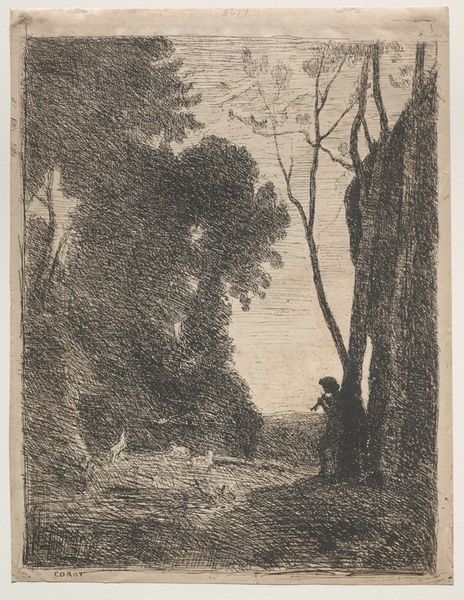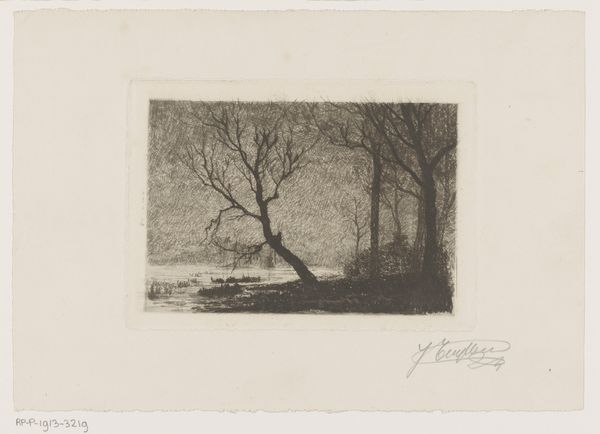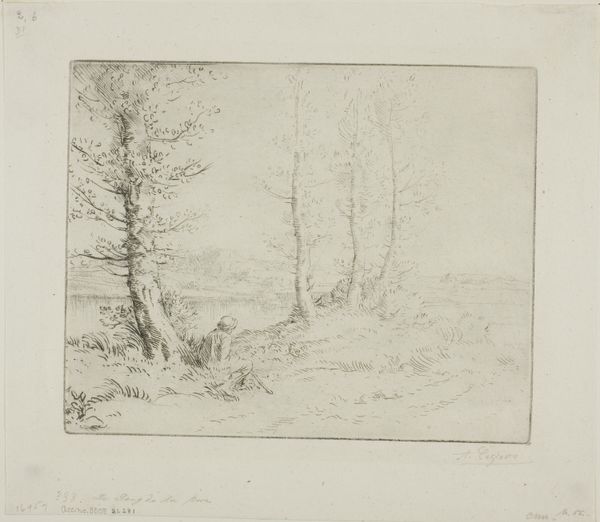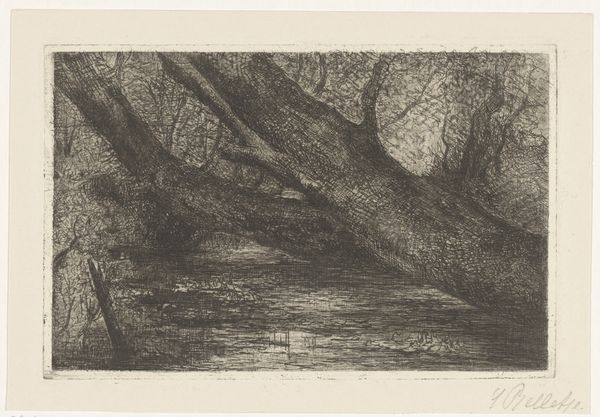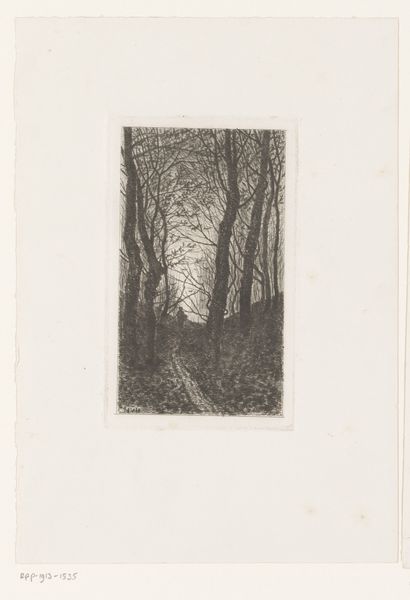
print, etching, paper
#
tree
# print
#
impressionism
#
etching
#
landscape
#
paper
#
naturalism
Dimensions: height 120 mm, width 160 mm
Copyright: Rijks Museum: Open Domain
Curator: What a somber, dreamlike forest scene. Is this a landscape meant to stir a feeling more than depict a place? Editor: Exactly. Here we have "Woodland Scene with a Goat" by Matthijs Maris, likely etched sometime between 1883 and 1888. What's most immediately striking is the deep saturation of the dark tones—it practically swallows the little goat referenced in the title. Curator: Indeed, almost occulted by the thicket. It’s as if Maris aimed to evoke a sense of primal connection with nature, pulling up archaic memories residing just beyond our conscious understanding of the landscape. Editor: Look closely and you'll see the remarkable texture achieved by the etching. The labor involved in creating such nuanced detail across the entire plate… How much time would it have taken Maris to achieve that density? And to what end? Curator: That density, those layers, evoke mystery. The goat, a traditional symbol of fertility, seems almost mournful here, enveloped by this overwhelming presence of the woods. The etching technique, with its reliance on line and tone, paradoxically makes the woods feel hazy, liminal. Editor: I’m also drawn to how the paper itself functions. That light hue becomes the ethereal moonlight filtering into the woods, an interesting balance in a scene dominated by such somber values. And consider the economics: Who was his audience, who was buying etchings like this? Curator: That soft light gives a glimmer of hope, yes? Maris isn't only presenting us with shadows; it suggests transformation, or the hope of renewal in the cycle of nature. The goat becomes more than just an animal; it’s an emblem of endurance. Editor: Certainly. Seeing Maris grapple with materiality alongside such clear aesthetic intent does prompt interesting questions about artistic creation at the end of the nineteenth century, don't you agree? Curator: Absolutely, it speaks to a complex interplay of naturalism and symbolism. He acknowledges the earthly, while inviting something dreamlike to be unearthed. Editor: Very well said. Thank you, that shifted my perspective. Curator: As did yours!
Comments
No comments
Be the first to comment and join the conversation on the ultimate creative platform.
